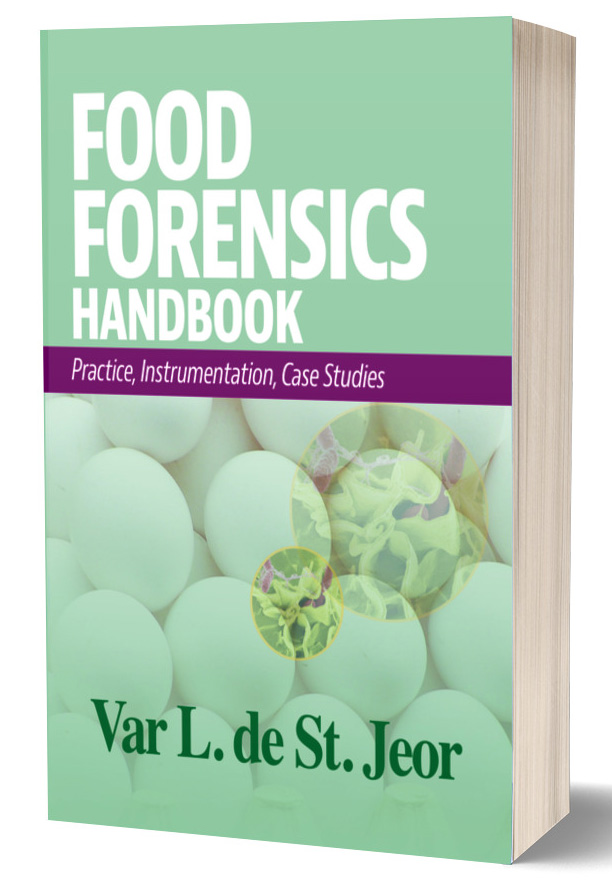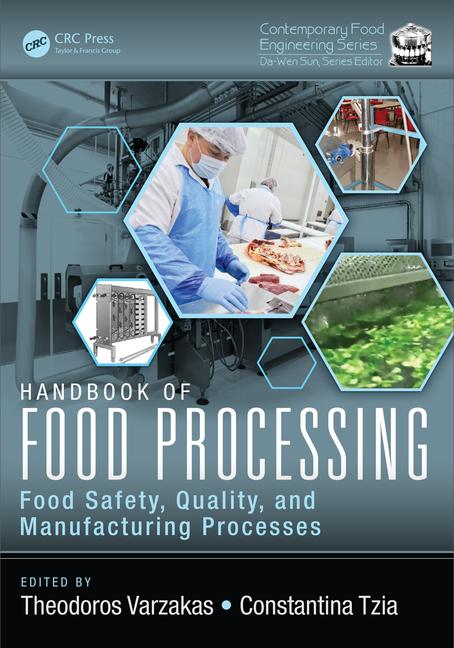7 Simple Rules for Effective and Hygienic Dry Goods Storage

For much of my professional career as a regulator, I never paid much attention to dry goods storage. As long as the foods were properly labeled, protected from overhead leakage and other contamination sources and the facility was maintained in a “broom clean” condition, obviously devoid of insect and rodent pests, it met the conditions of the regulations. Yes, I would cite the usual problems if they existed, pulling out the occasional damaged canned goods, asking for the removal of scoops left in dried ingredients with their handles encrusted with product from moisture and handling, and embargoing or ordering the destruction of insect and rodent-contaminated foods. Otherwise, I hardly gave any thought to space considerations and environmental conditions that favor ideal storage.
Then, several years ago, before the advent of the U.S. Food and Drug Administration (FDA) Food Code and the wealth of information available on the Internet today, I came upon an un-insulated, corrugated metal-roofed storage facility at a Southern jail that gave me pause to think about storage practices in a new light. It was the middle of summer and the inside temperature registered well over 105°F. Although only dried and canned goods were stored within this room, it had an off-odor, best described as a bit rancid with undertones reminiscent of old musty books and mouse urine. It took about a day to sort through this facility and identify all of the questionable foods and those that were obviously no longer wholesome and remove them.
Shortly after this incident, I asked myself, “What makes an ideal dry goods storage facility?” I came up empty. The retail food regulations remained silent on this issue; there has been no change to date. The current Good Manufacturing Practices (cGMP) Part 110.93 offered some language concerning the safe storage of finished foods, referring to protection against deterioration, but it too is non-specific and leaves the interpretation open to the responsible party. Since that Southern storage facility experience, I’ve learned that seven simple rules can keep dry goods safe, wholesome and nutritious for as long as possible: rotate your stock; the cooler the better; the drier the better; don’t let the sun shine in, practice separation, best the pests, and size matters. To expand on these simple principles, consider the following:
Food Rotation
The best advice in the effective use of a dry goods storeroom is: rotate, rotate, rotate. Date all foods and food containers. Stored foods cannot get any better than what originally went in, but they can certainly get worse. The first food in should be the first food out: FIFO. It takes a bit of imagination and craft to position foods within a storeroom to best implement this principle. Keep a handy and readily visible record of the “use by” and “sell by” dates of the received foods and the shelf life in general.
Temperature
Keep storerooms cool, dry and well ventilated. The temperature should be between 50°F and 70°F. The cooler, the better. Temperature has more to do with how long well-dried foods store than anything else. The storage lives of most foods are cut in half by every increase of 18°F (10°C). There is probably a limit as to how far this statement can be taken, but a reasonable expectation of shelf life may be extrapolated from room temperature down to freezing. No doubt, the inverse could also be considered true. Cool storage reduces respiratory activity and the degradation of enzymes; it reduces internal water loss and inhibits the growth of decay producing organisms, and in some foods such as fruits and root crops, it slows the production of ethylene, a naturally occurring ripening agent.
As part of maintaining optimal temperature, it is suggested that adequate ventilation should be provided (some air exchange rate is absolutely essential). In addition, the storeroom should be free of un-insulated steam and water pipes, water heaters, transformers, refrigeration condensing units, steam generators or other heat producing equipment.
Humidity
Ideally, storage areas should have a humidity level of 15% or less. Unless the storeroom is located in the desert, consider air conditioning or dehumidification during the most humid times of the year. A second option is to use moisture impervious packaging. Ideally, there is no reason not to use both.
Maintain stored foods in their original packages whenever possible. Most packaging is designed for the food it contains and will remain in good condition for their given shelf-life in the absence of temperature and humidity abuse. For instance, the cardboard box will help cushion jars and other glass containers from breakage. If original packaging is not practical, maintain the food in airtight containers, primarily to prevent the entry of insect and rodent pests and keep out other contaminants. To take this to another level, consider oxygen as a major threat to the quality of food. The chances are that moisture-proof packaging is also airtight. The less head gas (<2% O2) in a package, the longer its shelf life is maintained.
Sunlight
Avoid storing foods in direct sunlight. Sunlight promotes oxidation and the subsequent loss of the food’s nutritional value and quality. Fat-soluble vitamins, such as A, D, E and K are particularly sensitive to light degradation. It is far better to block sunlight on windows and skylights and rely on artificial illumination for the time the storeroom is in use.
Storage for Risk Reduction
Store dry foods at least six inches off the floor and at least 18 inches away from outer walls to reduce the chances of condensation brought on by temperature differences between the container and the surface against which it rests, as well as to facilitate cleaning and pest control activities. In the absence of rapid turnover of bulk palletized storage, consider placing the clean pallets on racks or blocks at least four inches (six inches is preferable) off the floor. This seemingly insignificant procedure goes a long way in preventing the harborage of pestilence, particularly rodents. It is also suggested that a 2-ft. ceiling clearance be maintained to avoid high temperatures at the ceiling.
Set aside an area that is designated for damaged or rework products. Torn containers should be taped or otherwise secured to prevent entry of contaminants and prevent further spillage. As a side note: There is a fine line between Class II (Potential Public Health Hazard) and Class III (Aesthetic Defects) in cans. It is for this reason, I ask all my clients to separate for credit any noticeable damage that is not identified when the goods are received, as well as for some boxed and/or bagged foods. If this practice is followed, a little more space is needed in the set-aside area.
If any way possible, do not store economic poisons, cleaning supplies and other non-food items in the same storeroom as food without some physical barrier that separate the two. I am also a strong proponent of storing look-alike condiments and other ingredients, such as salt and sugar, in spatially separate locations within a storeroom to avoid interchanging these products.
Vermin
To prevent the entry of insects, rodents and birds into the storeroom, doors and windows should be rodent and insect-proofed and kept closed whenever possible. Any opening to the outside should be sealed and all structural cracks and crevices promptly repaired. Bait boxes, if needed, should be regularly monitored and any damaged bait boxes and spilled bait should be carefully cleaned up and removed. If fumigation is absolutely essential, rely only on experienced licensed control operators.
Along these lines, the exterior of the building in which the storeroom is located should be maintained free of fire hazards, pest infestations and to preclude any security problems.
Size
Finally, we come to size of the dry good storeroom. As with all storage considerations: size matters. Since the 1970s, we have seen an almost geometric increase in single-use disposable products, including prepackaged ready-to-eat (RTE) foods, food utensils, cookware, housekeeping equipment and supplies, various paper goods, gloves and other personal hygiene packaging, waste containers—and the list goes on and on. Economy bulk purchasing of nonperishable items, items procured by consumer expectations and demand and the changing marketplace of how retail food is structured has dramatically changed the need for storage space. For instance, three decades ago, we used 0.1 cu. ft as the standard size of a meal. Today, without an increase in the quantity of food, the average meal is anywhere from 0.25 to 0.5 cu. ft or higher.
This increase in volume often has not been reflected in the design of many newer food establishments, including formula facilities. For this reason, I would like to refer you to one of the few readily accessible references for dry goods storage criteria: the FDA and Conference for Food Protection’s Food Establishment Plan Review Guide. Jim Anderton, who spearheads that section at the FDA, has done yeoman work in providing easy-to-use graphs and tables to complete the necessary space and storage calculations. To get you started in either new design or in revamping an existing facility to meet today’s needs, let me introduce you to Section III of the Food Establishment Guide for Design, Installation, and Construction Recommendations: Part 7, Dry Good Storage, which states the storage space of a food establishment is determined by the menu, number of meals served, quantities of food purchased and the frequency of delivery. The plan review guide suggests that food establishments use the following formula to estimate required storage space:
Required storage area (sq. ft.) = Volume per meal x number of meals between deliveries
Average height x fraction of usable storeroom floor area
Where: the volume per meal equals .025 to .050 cu. ft. per meal served; useful storeroom height equals 4 to 7 ft.; storage time between deliveries equals 3 to 14 days; and fraction of usable storeroom floor area is .3 to .6. Depending on the menu and type of food establishment, I might suggest a higher volume of 0.75 to 1.0 cu. ft. is considered with respect to cubic feet per meals served.
The guideline suggests that shelving can be constructed of suitably finished hard wood, durable plastic or preferably of corrosion resistant metal. It goes on to recommend that the highest shelf for practical use should be 7 ft. and the lowest should be 6 inches from the floor. Clearance between the shelves should be at least 15 inches. To calculate the total shelving needed, the following formula is applied, where D = depth of the shelves in feet; H = clearance between shelves in feet ; and C = 80% effective capacity of shelf height:
Linear feet of shelving for storage (ft.) = Volume per meal x number of meals between deliveries
D x H x C
For those interested in viewing additional dry good storage charts and formulae, this information and the full contents of the FDA/CFP Food Establishment Plan Review Guide is available for download at www.fda.gov/Food/FoodSafety/RetailFoodProtection/ComplianceEnforcement/ucm101639.htm.
Forensic sanitarian Robert W. Powitz, Ph.D., MPH, RS, CFSP, is principal consultant and technical director of Old Saybrook, CT-based R.W. Powitz & Associates, a professional corporation of forensic sanitarians who specialize in environmental and public health litigation support services to law firms, insurance companies, governmental agencies and industry. He is the first to hold the title of Diplomate Laureate in the American Academy of Sanitarians, and also is a Diplomate in the American Academy of Certified Consultants and Experts.
Dr. Powitz welcomes reader questions and queries for discussion in upcoming columns, and feedback or suggestions for topics you’d like to see covered can be sent to him directly at sanitarian@juno.com or through www.sanitarian.com.
>
Looking for a reprint of this article?
From high-res PDFs to custom plaques, order your copy today!







